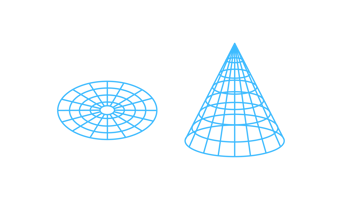One of the main reasons that management hierarchies still dominate the design of the modern workplace, despite all the downsides, is the simplicity and overall effectiveness of the model. Management innovators have to take this into account when working to come up with alternatives.
If you had to name the single most important building block of the modern organization, what would it be?
We would argue that it’s the basic organization design feature of managerial hierarchy and the corresponding reporting relationship between boss and subordinate.
In that hierarchical relationship, the manager has the single and far-reaching authority to command and control the execution of tasks. She generally assesses the performance of her subordinates and she’s typically the most important person, if not the only one, making hiring (and firing) decisions. The general expectation is that the subordinate will be obedient, and that the supervisor has the mandate to overrule the subordinate in the case of a conflict. There are typically no or few formal means of challenging a supervisor’s decision, just as there are no democratic, bottom-up legitimations and limits on a supervisor's position (such as elections or term limitations).
With all the talk about the future of work, and decades of ideas and initiatives framing hierarchies in different ways, it’s astonishing how closely this model and the lived reality still resemble the classic theory of bureaucracy described by German Sociologist Max Weber in the early 20th century.*
Weber described the employment of “a bureaucratic administrative staff” as a “monocracy”, that is individual officials dominated by a “supreme chief” (today we would call it a CEO). The individual officials are appointed and function according to a number of criteria, among them:
-
the organization “in a clearly defined hierarchy of offices”
-
each office having “a clearly defined sphere of competence”
-
officials being “appointed, not elected”
-
the office “constitutes a career. There is a system of ‘promotion’ according to seniority or to achievement, or both. Promotion is dependent on the judgment of superiors”
-
the official “is subject to strict and systematic discipline and control in the conduct of the office”
As Stanford Professor Bob Sutton once remarked, many of us have learned to dislike hierarchies. However, their persistence in organizations over time suggests that there must be some functional advantages to hierarchies that are very hard to supplant.
One key advantage is managerial hierarchy’s simplicity. This simplicity allows for planning and arranging the division of work at scale and ensuring coordination between the different parts of the organization through the command and control model. And the overall functional superiority, it seems, has long trumped alternative models that have sought to address hierarchies’ disadvantages and negative side effects.
If post-bureaucratic models of organizing are ever going to be able to scale beyond a select number of context-dependent niches, they will have to show how they change that balance: addressing downsides while achieving similar levels of functionality at scale.
The race is open. The practitioner debate is becoming more detailed and actionable, with the key design issues and transition questions being discussed and experimented with, in order to create experiences and hands-on management knowledge. One approach is working on how hierarchical authority is exercised by means of leadership development, e.g. by fostering collaborative leadership behaviors. Structural approaches focus on team-centric models and distributed leadership (which has long been recognized as a feature of high-performing teams, even if it’s not formalized as part of the organizational structure).
Recognizing the effectiveness of managerial hierarchy is therefore not the end of the debate about the organization of the future – rather it’s a starting point.
Reference
* See Max Weber, Economy and Society, p217, Chapter Legal Authority, The Pure Type.



